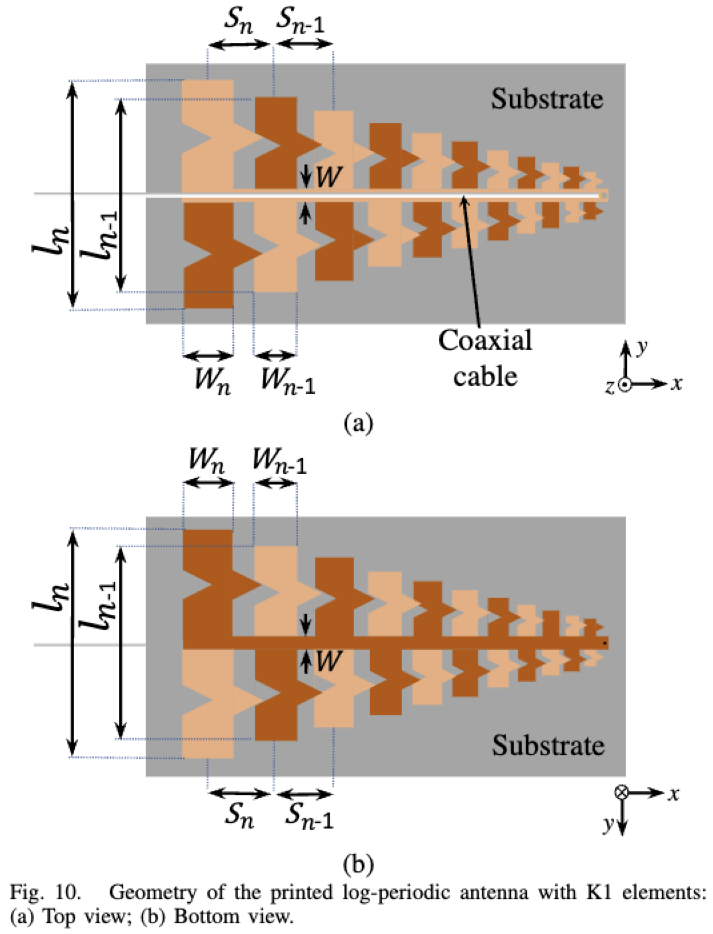A Detailed Design Procedure for Printed Log-Periodic Antennas with Koch Fractal Dipoles
DOI:
https://doi.org/10.14209/jcis.2024.2Keywords:
Printed log-periodic antennas, Koch fractal, printed antennas.Abstract
This paper presents a complete procedure for the design of printed log-periodic antennas. An investigation on the coaxial-to-parallel-strip transition usually present in this kind of antenna is discussed in detail and it is demonstrated to be very critical for the achievement of the desired impedance bandwidth. Furthermore, in order to reduce the overall antenna size, the dipoles have been implemented based on Koch fractals. It has been demonstrated that the use of Koch fractals allowed reducing the antenna area by 25 % in comparison to the classical printed log-periodic structure. Both designs have been optimized for the frequency range 2.3 – 6 GHz, so as to cover several wireless services, such as WLAN, mobile communications and WiMAX, among other applications. Experimental results validate the proposed design strategy.
Downloads

Downloads
Published
How to Cite
Issue
Section
License
Copyright (c) 2024 Arielly Rodrigues, Edson R. Schlosser, Marcos V Heckler (Author)

This work is licensed under a Creative Commons Attribution 4.0 International License.
Authors who publish in this journal agree to the following terms:
- Authors retain copyright and grant the journal right of first publication with the work simultaneously licensed under a CC BY-NC 4.0 (Attribution-NonCommercial 4.0 International) that allows others to share the work with an acknowledgment of the work's authorship and initial publication in this journal.
- Authors can enter into separate, additional contractual arrangements for the non-exclusive distribution of the journal's published version of the work (e.g., post it to an institutional repository or publish it in a book), with an acknowledgment of its initial publication in this journal.
- Authors are permitted and encouraged to post their work online (e.g., in institutional repositories or on their website) before and during the submission process, as it can lead to productive exchanges, as well as earlier and greater citation of published work (See The Effect of Open Access).
___________
Accepted 2024-01-10
Published 2024-01-29


